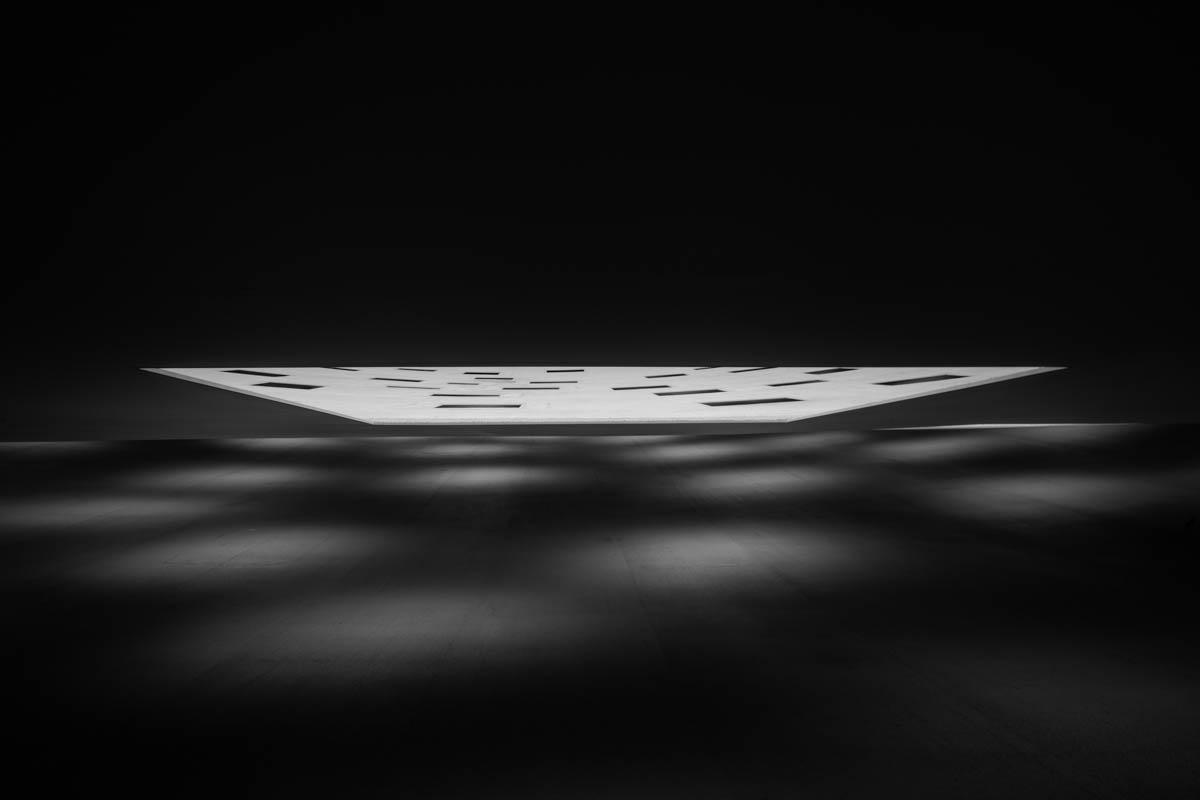
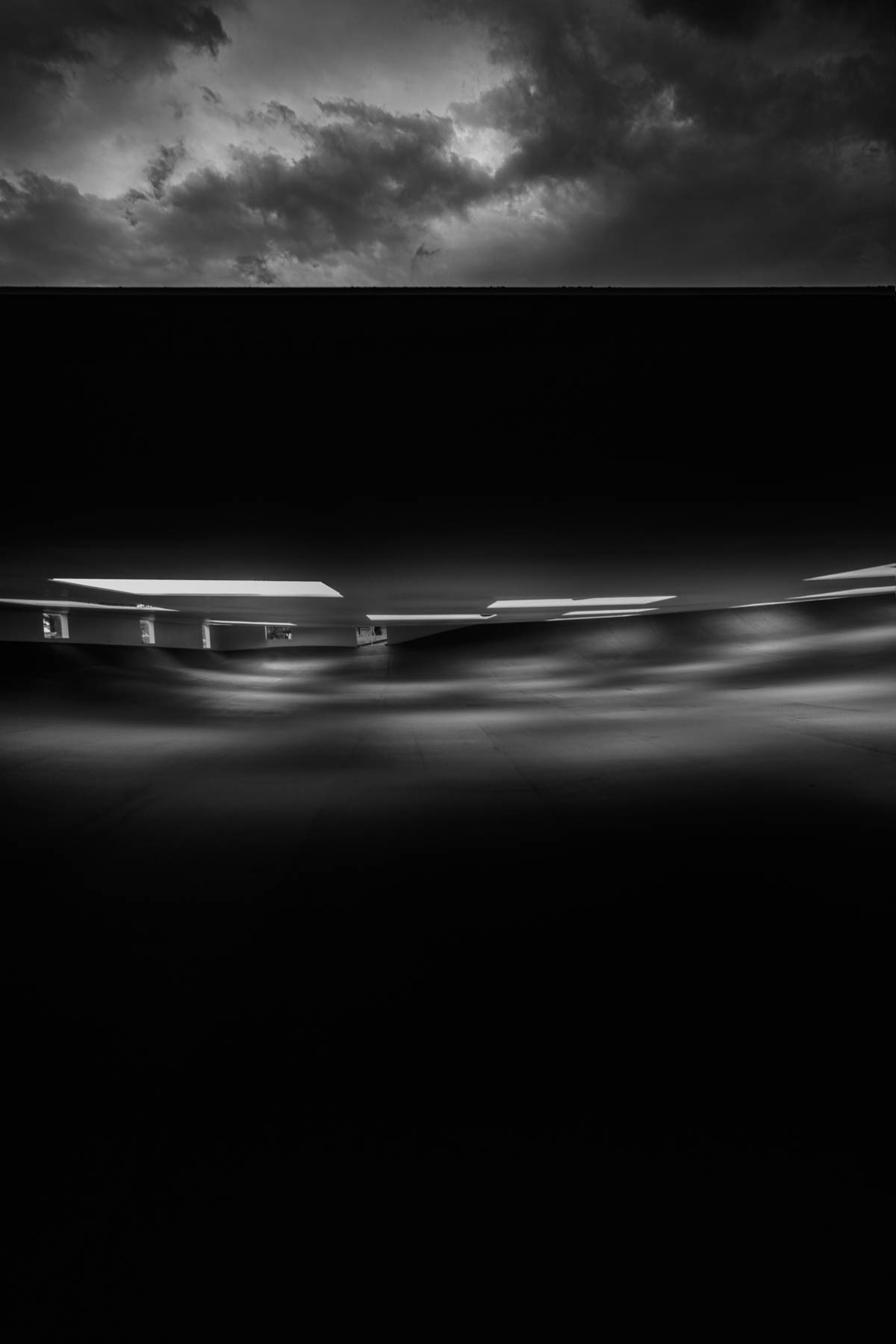
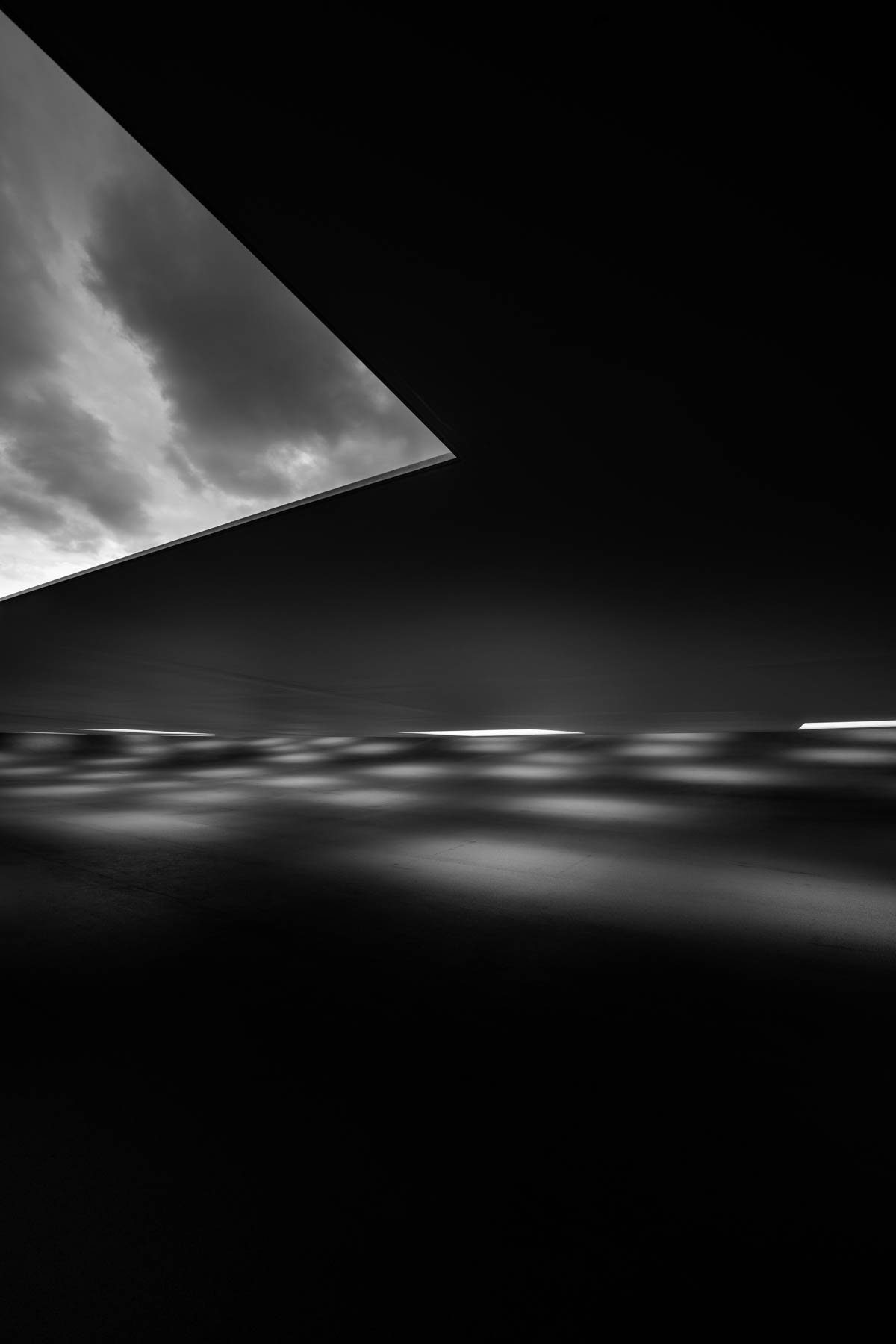
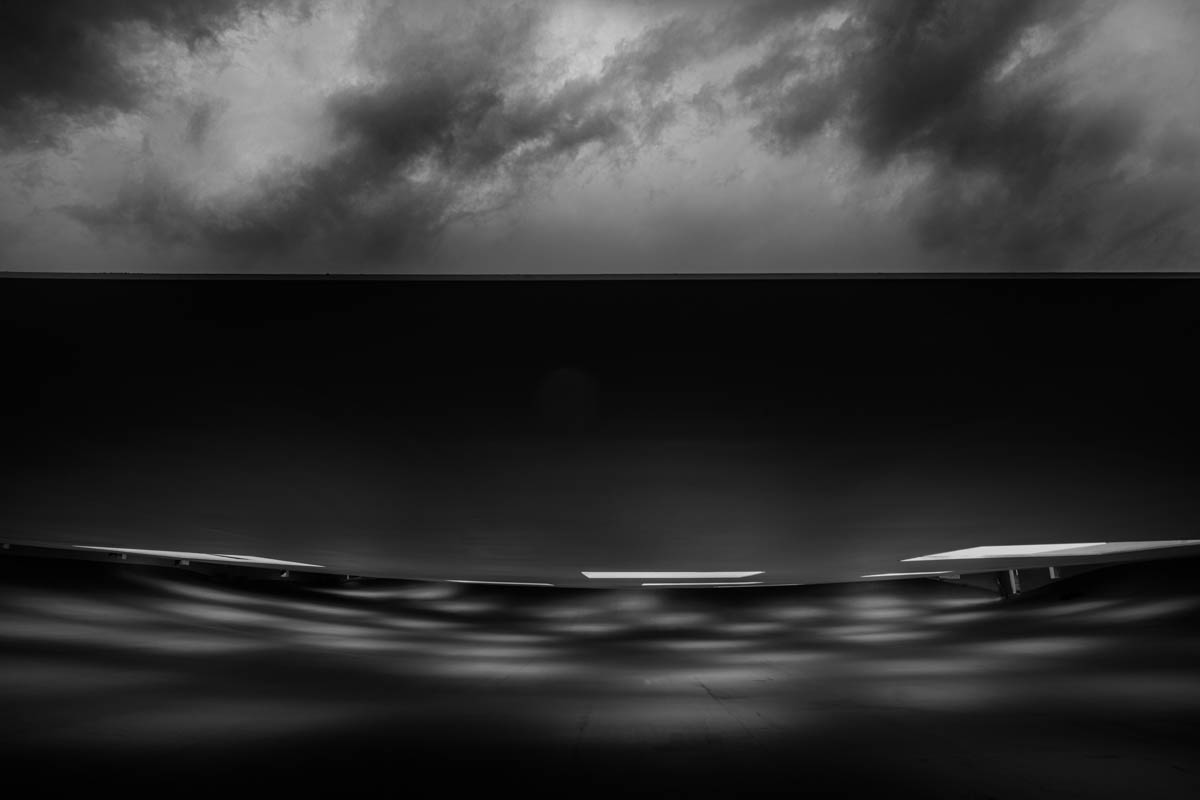
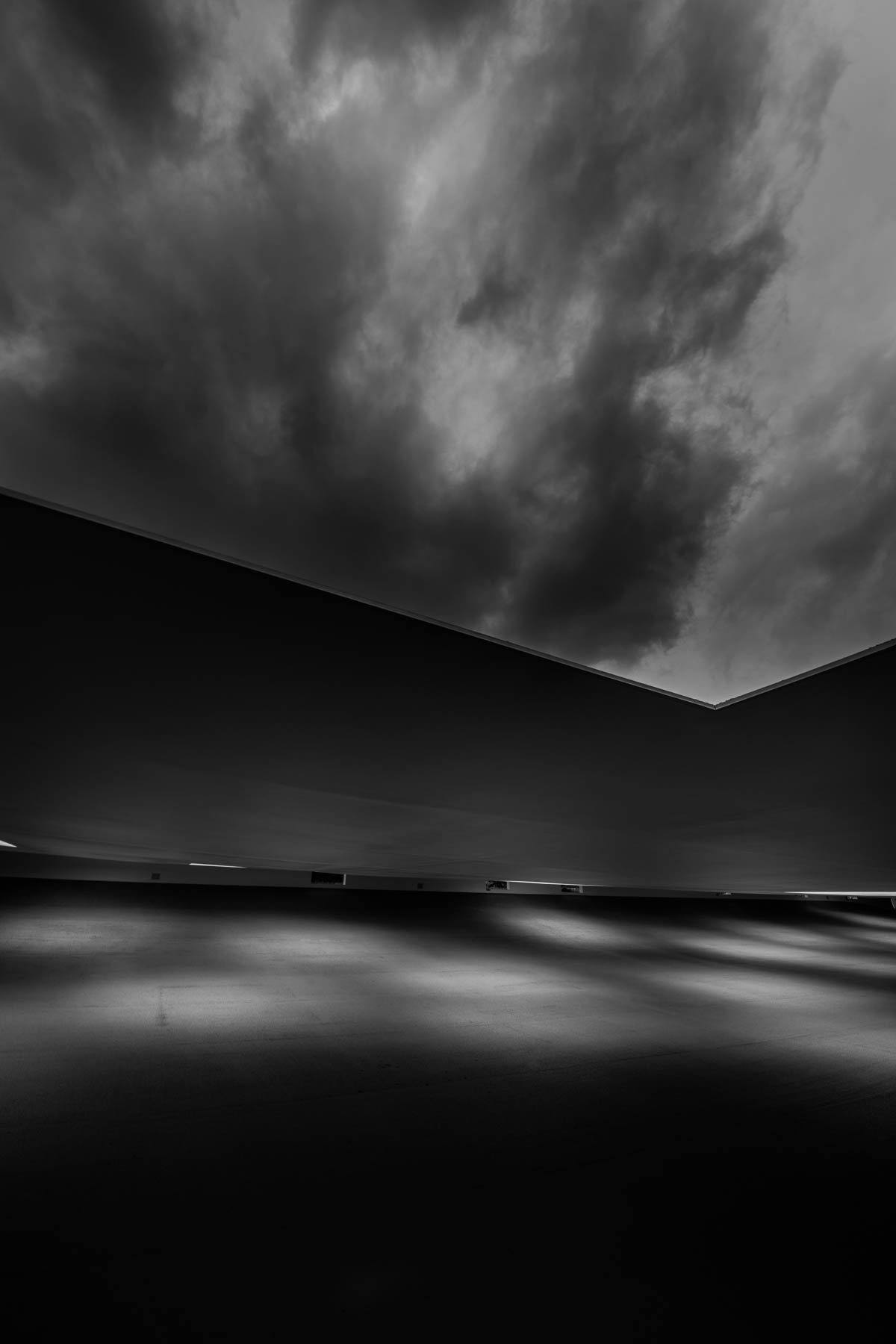
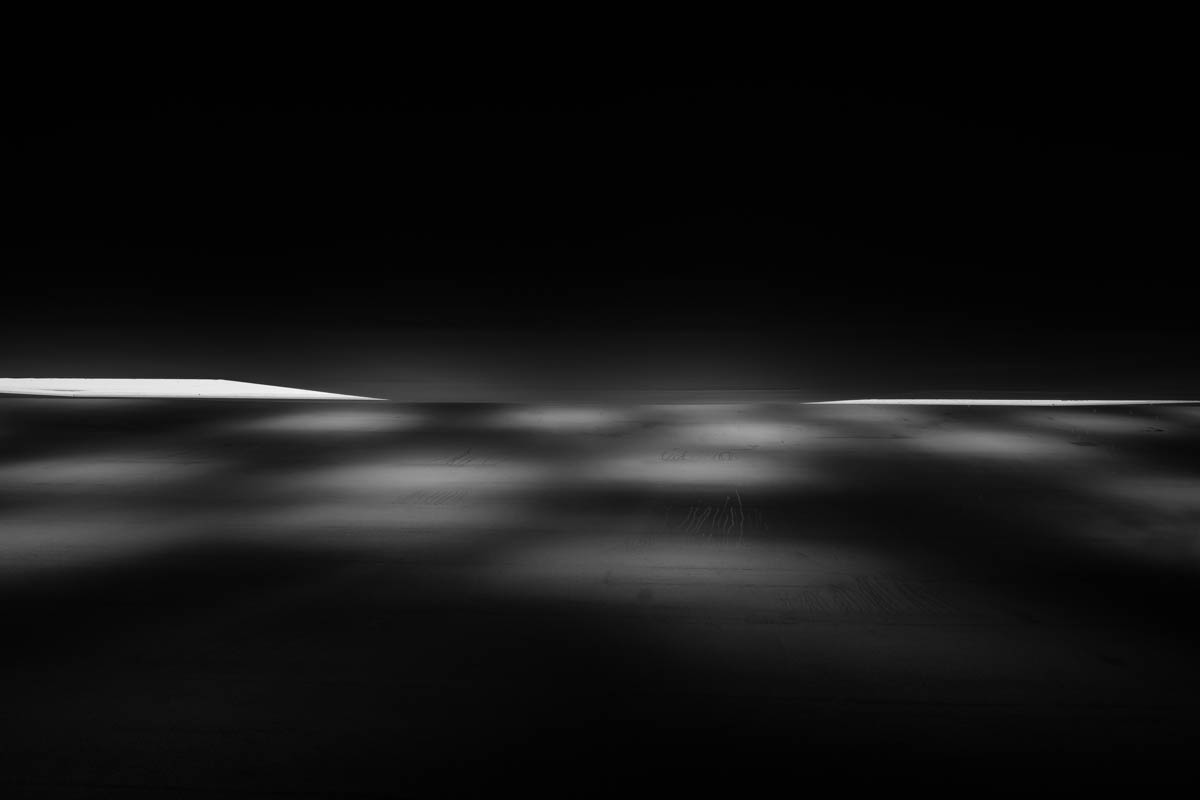
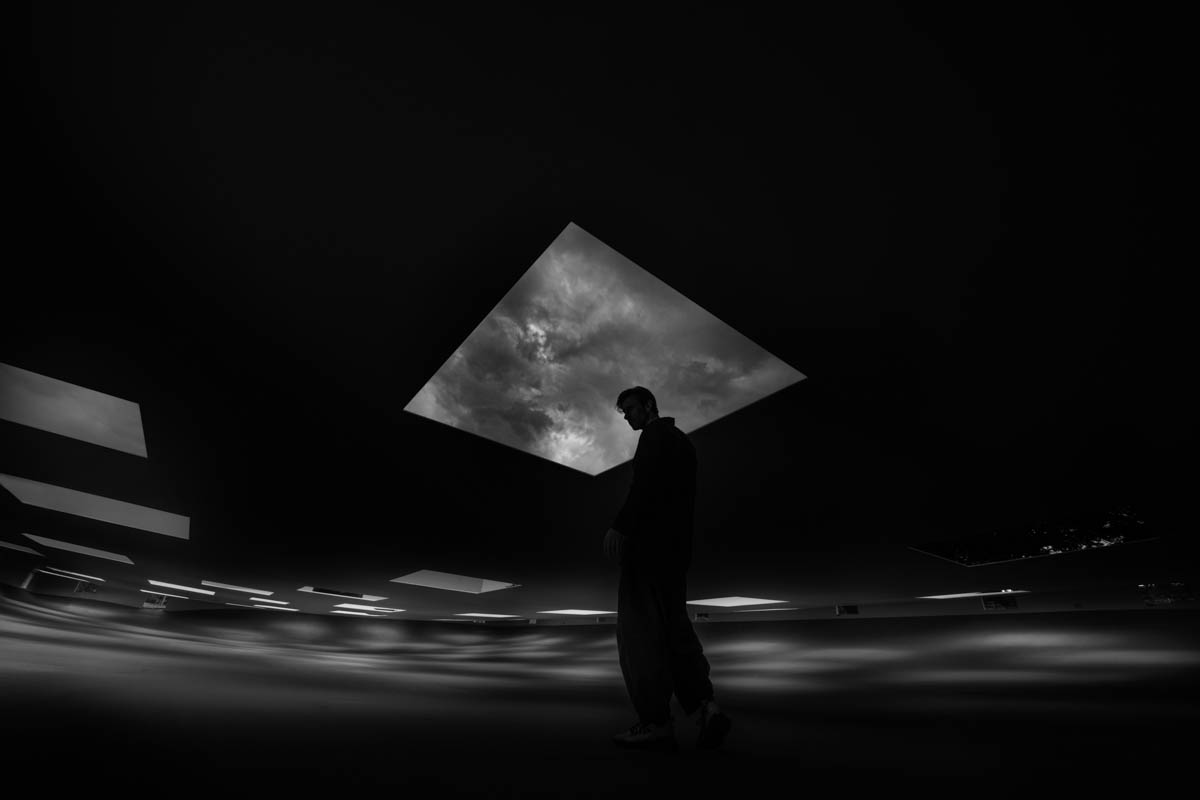
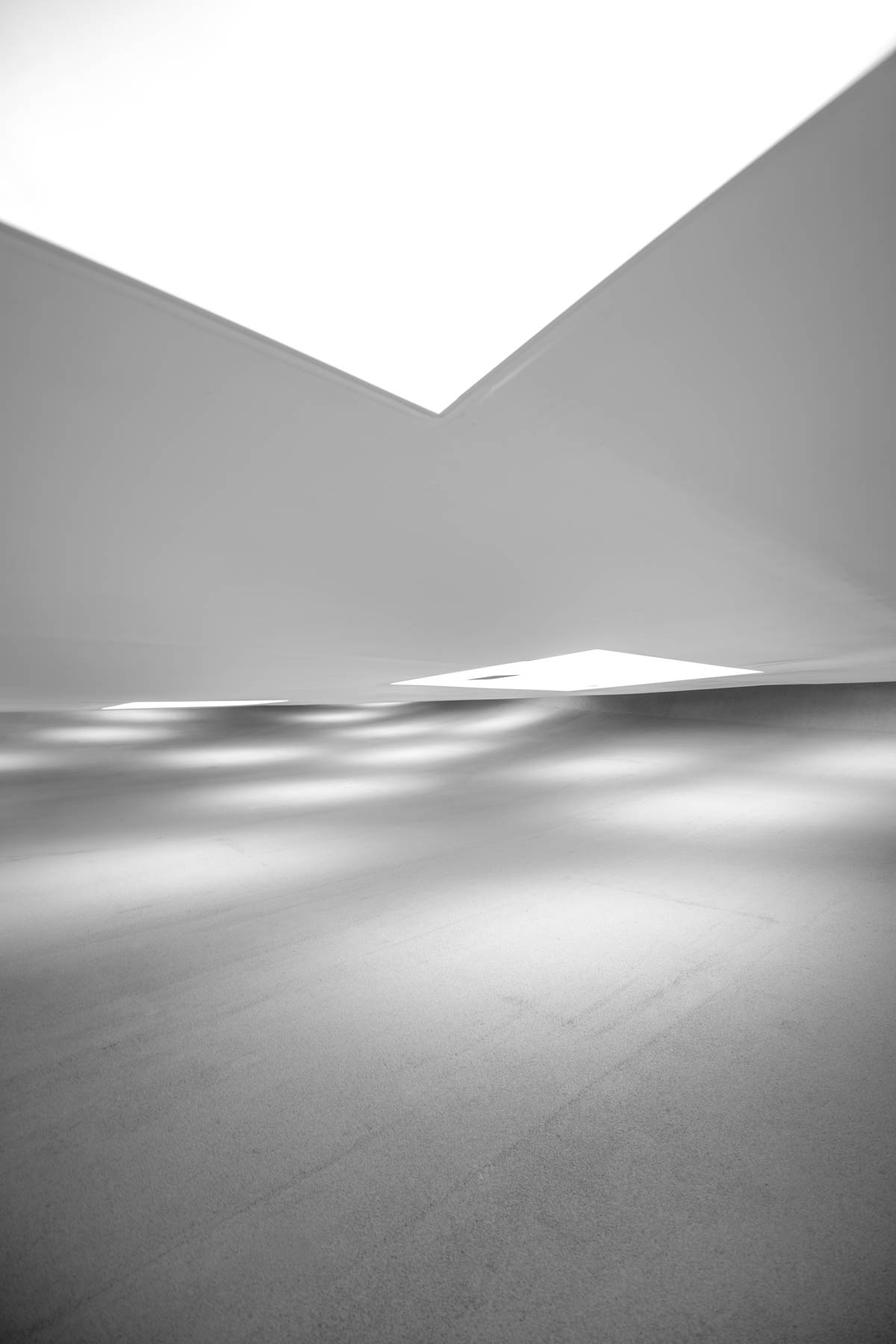

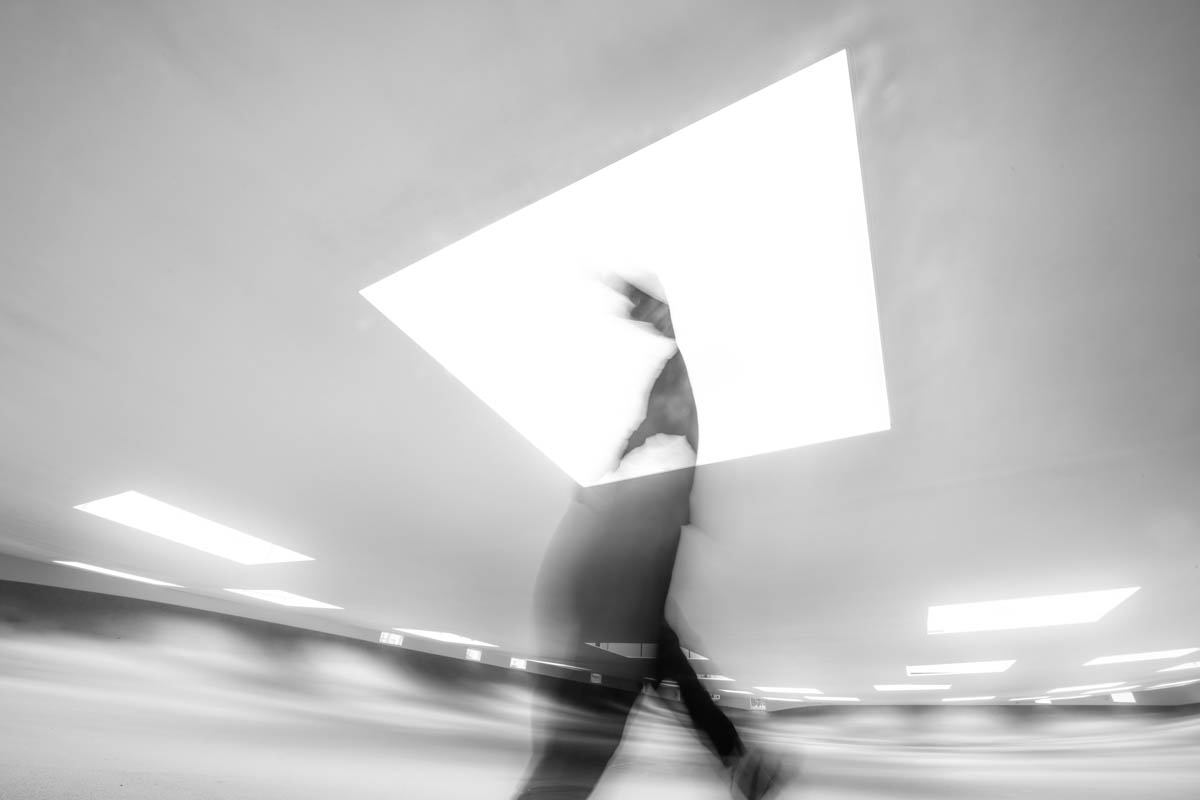
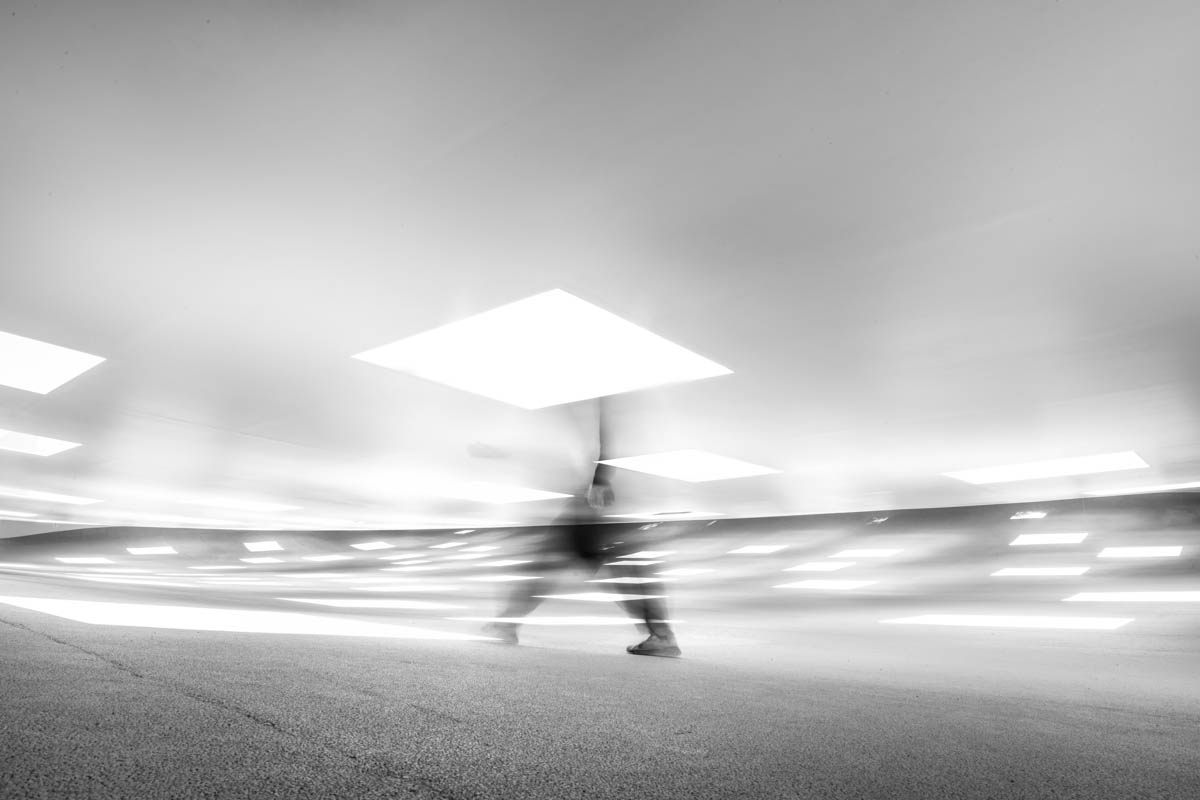
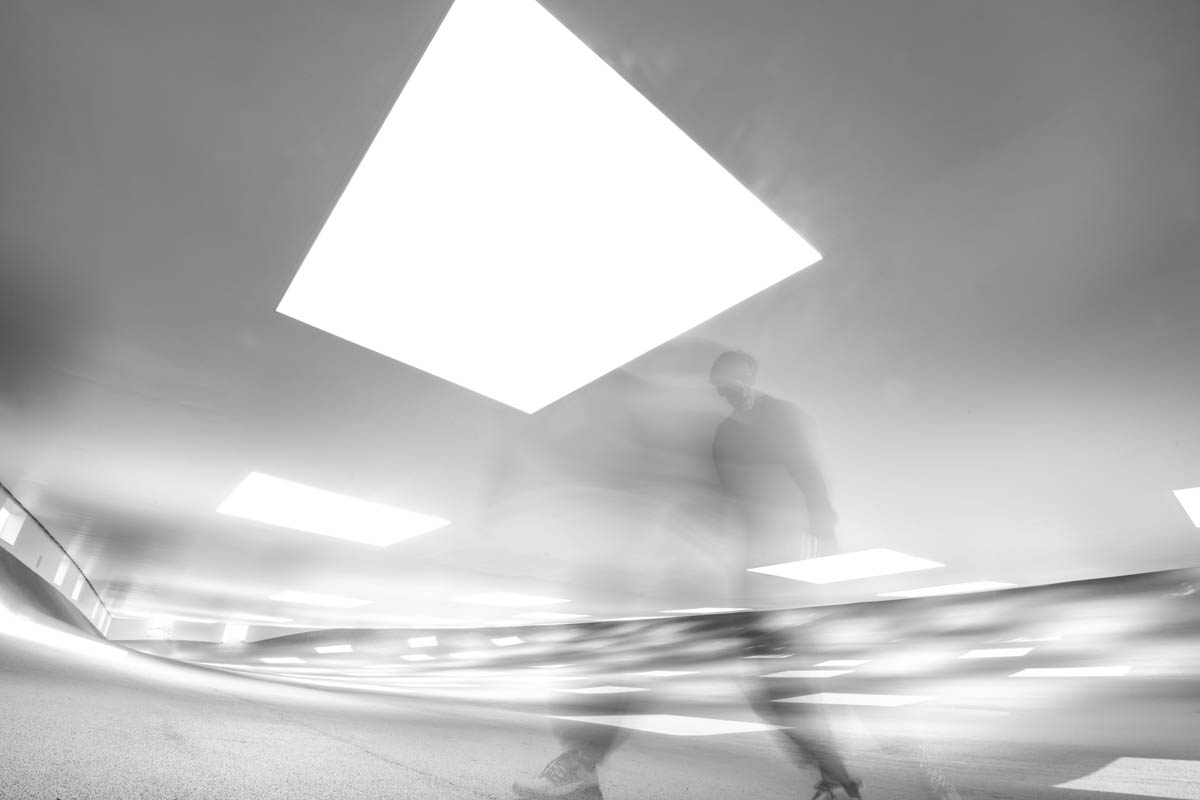

About This Project
通常、私は写真撮影に関しては細部に渡りこだわりがある。絶対的な確信を持って一つのビジョンで対象と向き合えるよう、光を調整し、色々な手法を試す。この建築プロジェクトに対する石上純也氏の思いや概念的な構成については分からないが、写真家として、この広場は光を独特に操作し、自己という概念に対する感覚を拡大している。この空間の写真撮影に際しては、全く確信も、一つのビジョンも見出すことがなかった。人間の目は、光の違いを取り入れられる能力があり、そのためにカメラがなくても、構造物に連携しての光の動きをそれほど明らかなものではないけれども取り入れられる。しかし、この空間と光を探す手段としてカメラを通して見ると、建築構造の裏側にある発散的思考が明らかになる。
暗闇
この空間に対する私の最初の感情は、暗闇、内省の一種だった。この感情は、オンラインでは光と白に見える映像とは全く反対だ。外側と空にむき出しになっている空間に焦点を絞ることで、その空間が暗闇へと落ちていく。私が創り出したイメージは、光の断片が暗闇へと連なっているもの。上空の嵐は、題材となった、自己の概念、内なる戦いに立ち向かう自己の孤独といったイメージだ。この空間における対話者は、自分一人だけで、安堵または恐怖のいずれかをもたらす暗闇に囲まれている。この意味で、この空間は静まり返った一人だけの瞑想や内省の場所となっている。
光
カメラの焦点を内側に移動させ、空間の内側を映し出すと、突然、広場に光が満ち溢れ、概念的には焦点が外側へと移行する。空間は流動的で、白く、そして長い露出で、空間の中の動きが流れている。自己の概念は孤独感がかなり消え、空間の一部に溶け込んだような感覚だ。その意味で、空間を通して対話者がダンスに誘われているようで、孤独な存在としての自己ではなく、空間の流れと共にあるような感覚を持てる。何本もの差し込む光が内側の明るさと溶け合い、空間と自己が純粋な白い静寂の中に浮いている。
沈黙と建築
広場で1日を過ごすと、この空間の印象が自己と二面性についての解釈なのだと気づく。内なる模索と外側の広がりという自己に対する見方を与えてくれるのが静寂の空間だ。すべての人間は、内なる自己と外に向いた自己、暗闇と光でできていて、この広場の建築物と光はこのありふれた概念の美しい隠喩であると分かる。この広場が音で満ち溢れることがあるのかどうか分からないが、建築家はこの構造物を静寂のためにデザインしたと願うしかない。この静寂の状態であれば、この広場は内側と外側の両方で瞑想ができる強力な空間になる。光と暗闇の間を上下する、流動的な空間であり、自己を探る瞑想のための強力で刺激的な空間だ。
Typically I am very specific when it comes to photography. I manipulate light and after some experimentation approach any given subject with absolute conviction and singular vision. I do not know Junya Ishigami`s mind nor the conceptual structure he envisioned for this architectural project, but as a photographer this plaza is a unique manipulation in light and in an extended sense the concept of self. I found I had no conviction, no singular vision, when it came to photographing this space. Our eyes are extraordinary at adapting to light difference so without a camera the play of light in relation to the structure is not so obvious, however, with a camera as ones means of exploration of this space and light, a divergent concept behind the architectural structure is revealed.
Darkness
My initial feeling of the space was one of darkness, of inner reflection. This is quite the opposite of images one finds online which are light and white. By focusing on the outside space and exposing for the sky, the space falls into darkness. The images I created were of slices of light followed by darkness. The storms above became the subject in some of the images, the concept of self, one of private solitude dealing with inner struggles. The interlocuter in this space was left alone, surrounded by darkness which could either provide comfort or fear. In this sense, the space became a place of silent solitary meditation and reflection.
Light
In shifting the camera`s focus inward, exposing for the inside space, suddenly light filled the plaza and conceptually the focus shifted outward. The space was fluid, white, and with long exposures, motion flowed through the space. The concept of self was much less solitary, one felt part of the space. The interlocutor is invited to dance through the space in this sense, experiencing the self not as a solitary being, but as part of the space flowing together. Beams of light merge with the lightness inside and the space and self float in a pure white silence.
Architecture and the Self
Spending a full day at the plaza, my impression of the space is as a commentary on the self and our dual nature. It is a silent space that provides one a view of the self in terms of inner reflection and outer openness. We are all made of an inner and outer self, of darkness and light, and I found the architectural structure and light of the plaza a beautiful metaphor for this cliché concept. Whether there are days when the plaza is filled with sound I do not know, however, I can only hope that the architect designed the structure for silence. It is in this state that the plaza becomes a powerful space of both inner and outer meditation. It is a fluid space of reflection, fluctuating between light and dark, inside and outside, a powerful and provocative space to explore the self.

